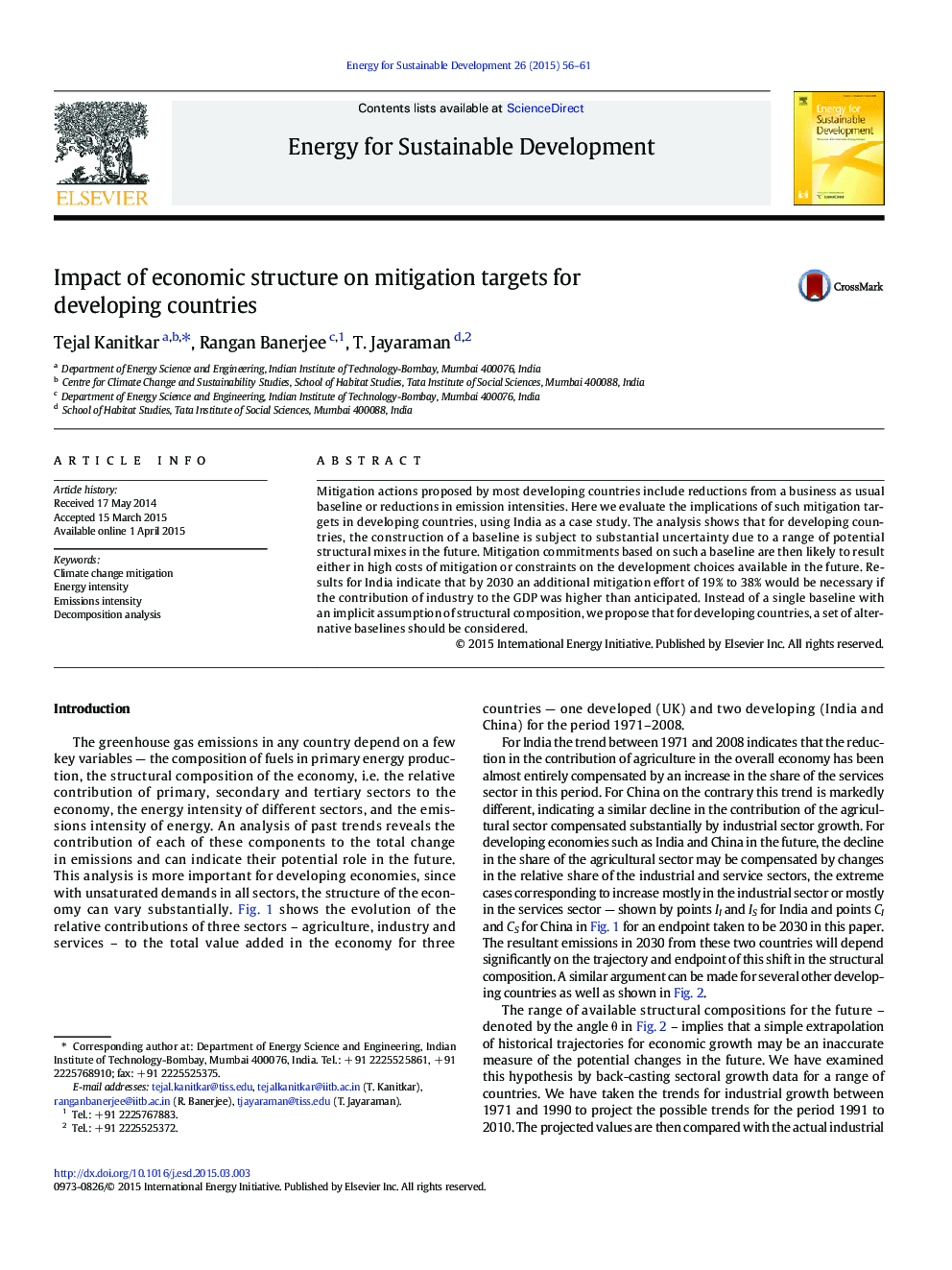| Article ID | Journal | Published Year | Pages | File Type |
|---|---|---|---|---|
| 1046835 | Energy for Sustainable Development | 2015 | 6 Pages |
Mitigation actions proposed by most developing countries include reductions from a business as usual baseline or reductions in emission intensities. Here we evaluate the implications of such mitigation targets in developing countries, using India as a case study. The analysis shows that for developing countries, the construction of a baseline is subject to substantial uncertainty due to a range of potential structural mixes in the future. Mitigation commitments based on such a baseline are then likely to result either in high costs of mitigation or constraints on the development choices available in the future. Results for India indicate that by 2030 an additional mitigation effort of 19% to 38% would be necessary if the contribution of industry to the GDP was higher than anticipated. Instead of a single baseline with an implicit assumption of structural composition, we propose that for developing countries, a set of alternative baselines should be considered.
